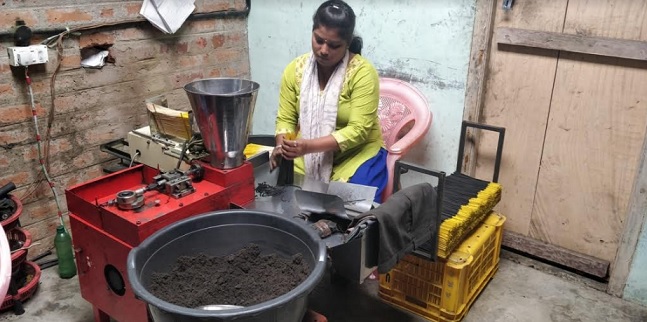Trending Now
- 830 voters names go missing in Kavundampalayam constituency
- If BJP comes to power we shall consider bringing back electoral bonds: Nirmala Sitaraman
- Monitoring at check posts between Kerala and TN intensified as bird flu gets virulent in Kerala
Post
Incense Industry in Delhi NCR Region to Grow at the Rate of 20-25% in 2019
![]() January 11, 2019
January 11, 2019
Incense industry in Delhi NCR has witnessed 15% – 20% growth in the last 5 years and it has evolved into a vibrant production and trading hub. Unlike other parts of India, Incense industry in Delhi and North India is driven by many variants of dhoop batti and agarbathi. There is an increased demand for contemporary variants of popular fragrances like Rose, Jasmine, Sandalwood and Mogra.
 |
AIAMA – Making of Agarbathi
Over the years, Delhi NCR region has become a key agarbathi manufacturing hub that caters to the demand of Northern markets like Punjab, Haryana, Uttar Pradesh, Jammu, parts of Rajasthan and Madhya Pradesh. It has also become a centre for export of Puja items including a considerable quantity of agarbathi to key markets in Gulf, Europe, and Africa region.
Speaking about the growth, Mr. Sarath Babu, President, AIAMA, said, "Delhi NCR region has emerged as a strong export base in the last decade while it also continues to be one of the top consumer market. The market has evolved with its preferences for puja products especially Incense, owing to fast changing lifestyle. Currently, Delhi NCR region employs around 50,000 people out of which close to 70% are women. This is one of the key labour intensive industry in our country that provides opportunity, flexibility and financial independence to women."
Speaking about the industry in Delhi NCR region, Mr. Pankaj Nagdev, Managing Committee Member, AIAMA, said, "The consumer market in Delhi is vast with varied preferences. Consumer choices differ with their faith inclination, lifestyle and surrounding. For eg. Residents at posh areas like Defence colony, Saket, Vasanth Kunj, Gurugram have inclination towards mild, younger yet fancy variants of classic fragrances; on the other hand consumers in areas like Old Delhi, Noida, Ghaziabad, Paharganj have inclination towards strong classic fragrances."
"Another interesting trend is that, for millennials and Gen Z in metropolis regions, adoption of incense products is not limited to praying rituals, it is also a preferred product for meditation, yoga and is increasingly being used as a freshener at home," added Mr. Pankaj Nagdev.
Northern states like Jammu, Punjab, and Himachal have preference for wet dhoop batti, while parts of Delhi, UP, Chandigarh have fondness for both dry dhoop batti and agarbathi. With the changing trends and evolving demand, the incense industry is all geared to witness a significant growth of 20%-25% in next 5 years, reports AIAMA.
About All India Agarbathi Manufacturers Association (AIAMA)
Established in the year 1949 as MOMA (Mysore Oodabathi Manufacturers’ Association) by seven founding members, AIAMA has been working tirelessly towards encouraging the growth of Agarbathi industry and allied products in India. In the early 80’s, with increased interest and participation of manufacturers from other Indian states, MOMA was renamed to ‘All India Agarbathi Manufacturers Association’ (AIAMA). With head office in Bengaluru, at present more than 700 Agarbathi manufacturers across India are life members with AIAMA. The association has been aggressively working with the industry peers, policy makers and government bodies to address various issues of the Agarbathi and allied industries. Association’s efforts are not only restricted to the support and growth of Agarbathi industry in the domestic market, but also to drive for demand growth in the international markets.


















